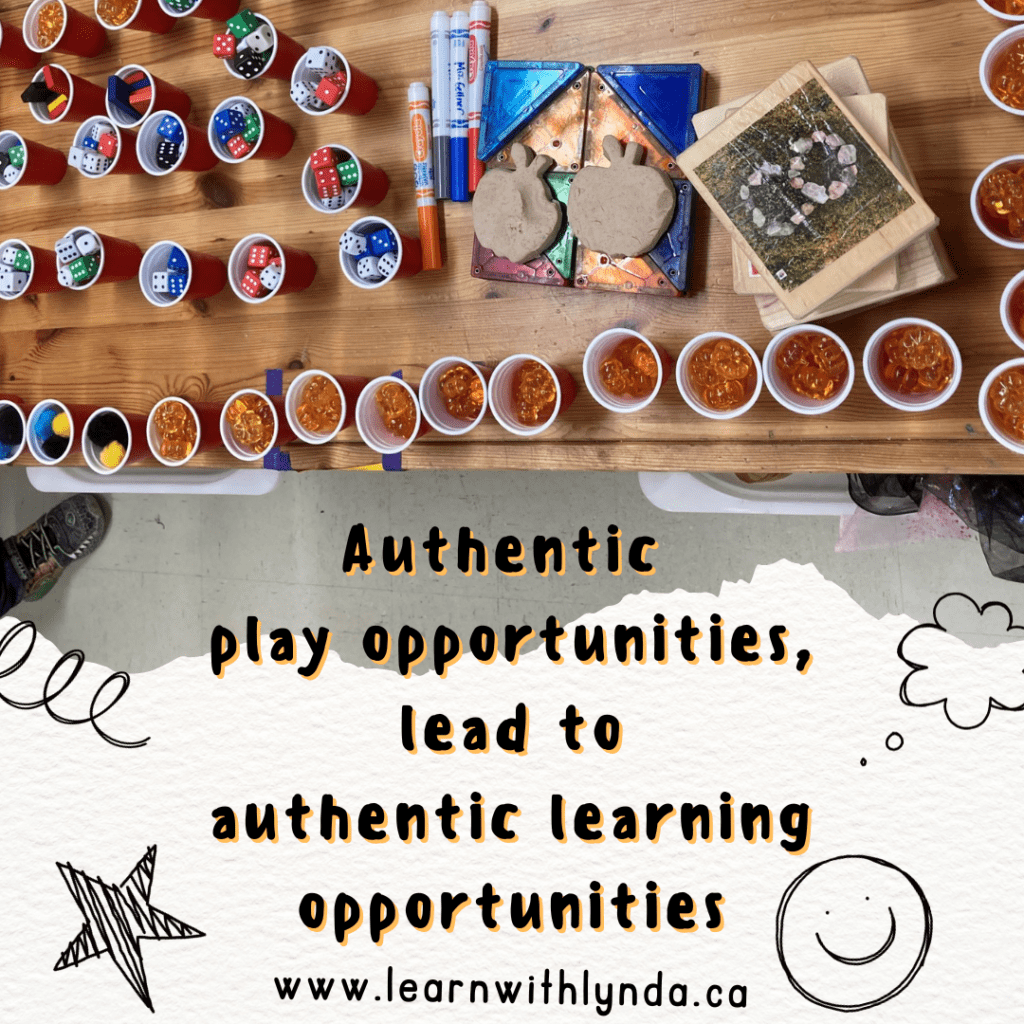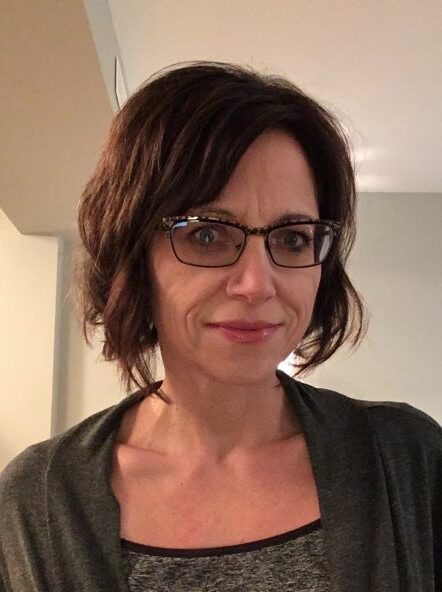I am often asked why I lean towards unstructured play blocks as opposed to play centre rotations. Helpmegrowmn.org states that
“Unstructured play allows children the freedom to explore, create and discover without predetermined rules or guidelines. It’s been shown to foster cognitive development while boosting physical development and social and emotional development. It specifically helps creativity and imagination, problem-solving abilities and social skills.”.
I couldn’t agree more. Providing the gift of time to my students to explore, think and be is a critical part of my daily schedule. When I observe my students during this unstructured play block, I see incredible skills and abilities developing.
This past Friday, I noticed that many of my students were extending and enriching their play. Here are two examples.
Magna-tiles during an Unstructured Play Block
Typically, my students use the magna-tiles to build 3D structures. This play involved using the tiles to create a picture. The students first told me that the image was of two birds, I came back later and the image had changed. They talked about the numbers and types of shapes they used to represent their thinking. It was now the beginning of a person’s legs and body. As the children continued to explore with the shapes, a new figure emerged. Now we have a person (apparently, it is me). I was asked to lay down on the blocks to see if I fit. I did this and when I came back one final time, details had been added to extend their original thinking. Powerful problem solving, collaboration and creative thinking took place during this unstructured play block.
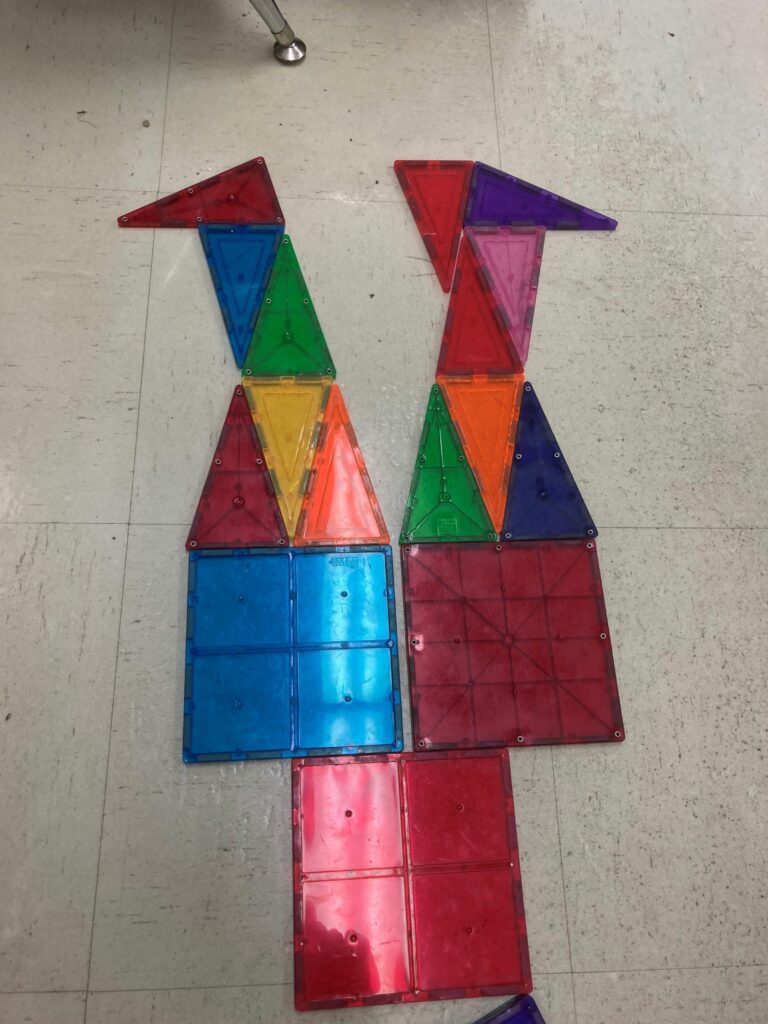
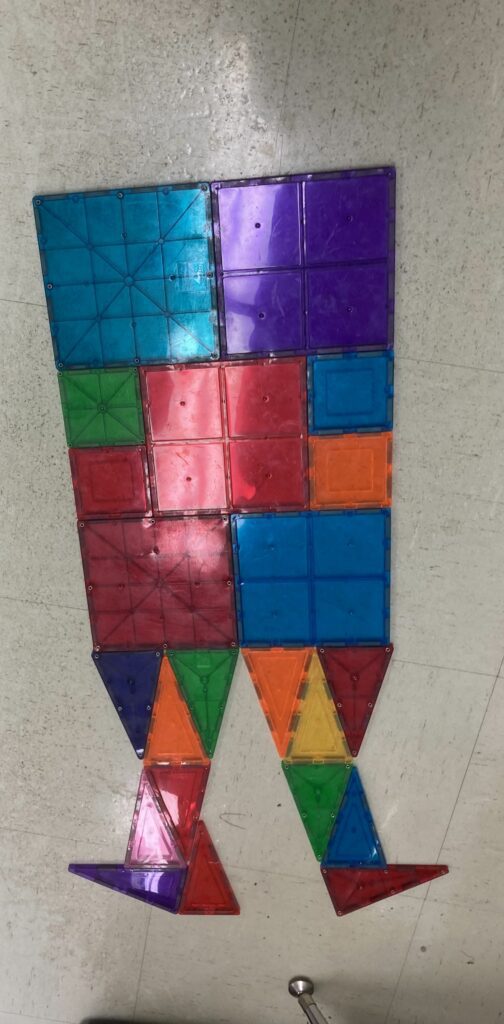
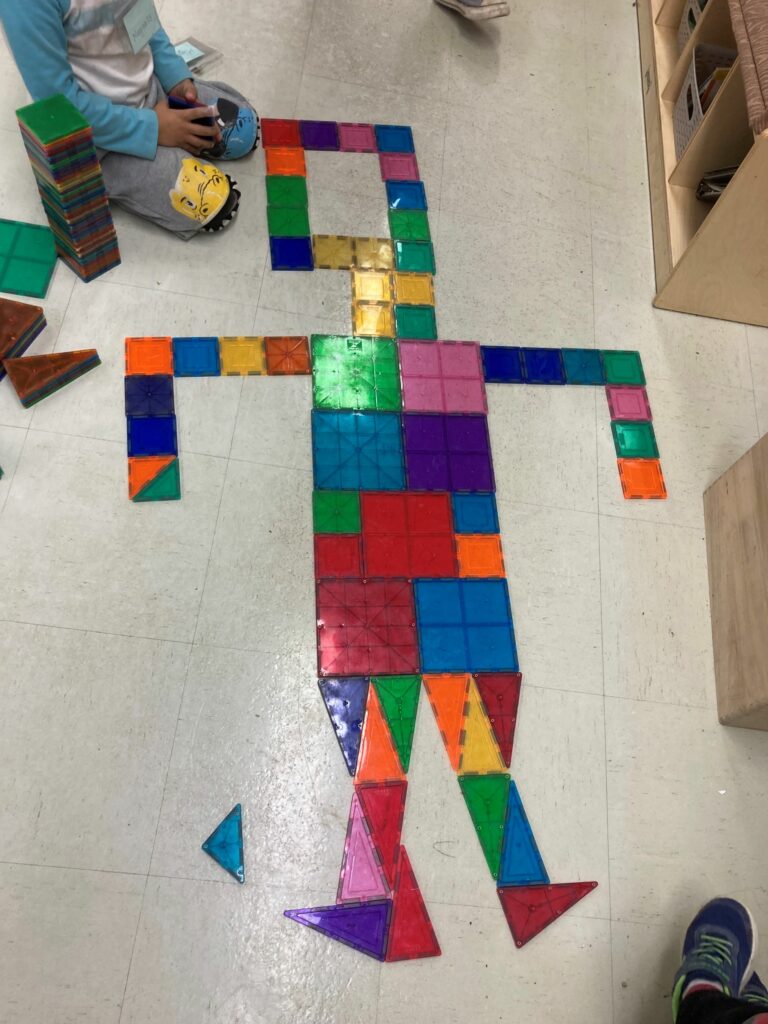
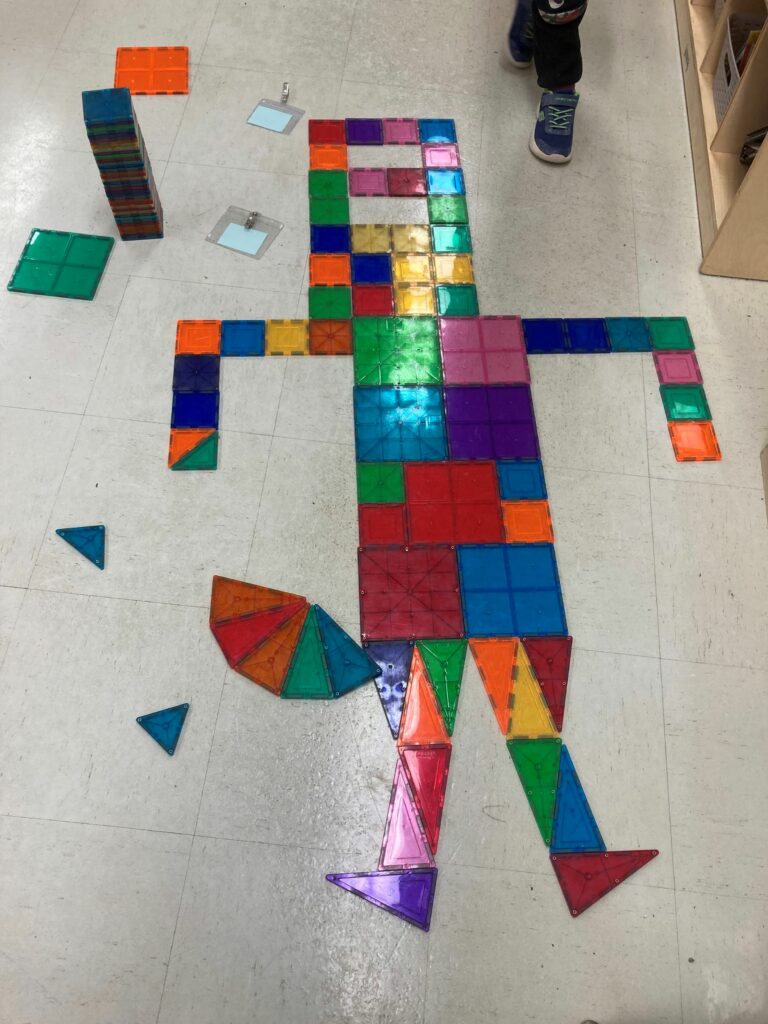
A Store to Candy and More during an Unstructured Play Block
In another area of the classroom, another student was also creating with the magna-tiles. He told me that the building was a grocery store and he pointed out where the entrance was. I asked what the name of the store was and he then added a label so that folks viewing his structure would know that that it was Superstore. Another child in close proximity, heard the conversation about a store, and started to use the blocks to create a candy aisle.
Again, I asked how would people know it was the candy aisle and she also created a label. I later came back to the store and was amazed how it had grown. It now had a variety of good for sale and more children had also included labels with the items. A perfect example of weaving writing into play. It is important to note that the children in this play scene are just learning letters and sounds and have only just started to put together sounds to spell some cvc words. I was impressed with how they extended these budding skills to spell other words that they needed for their play.
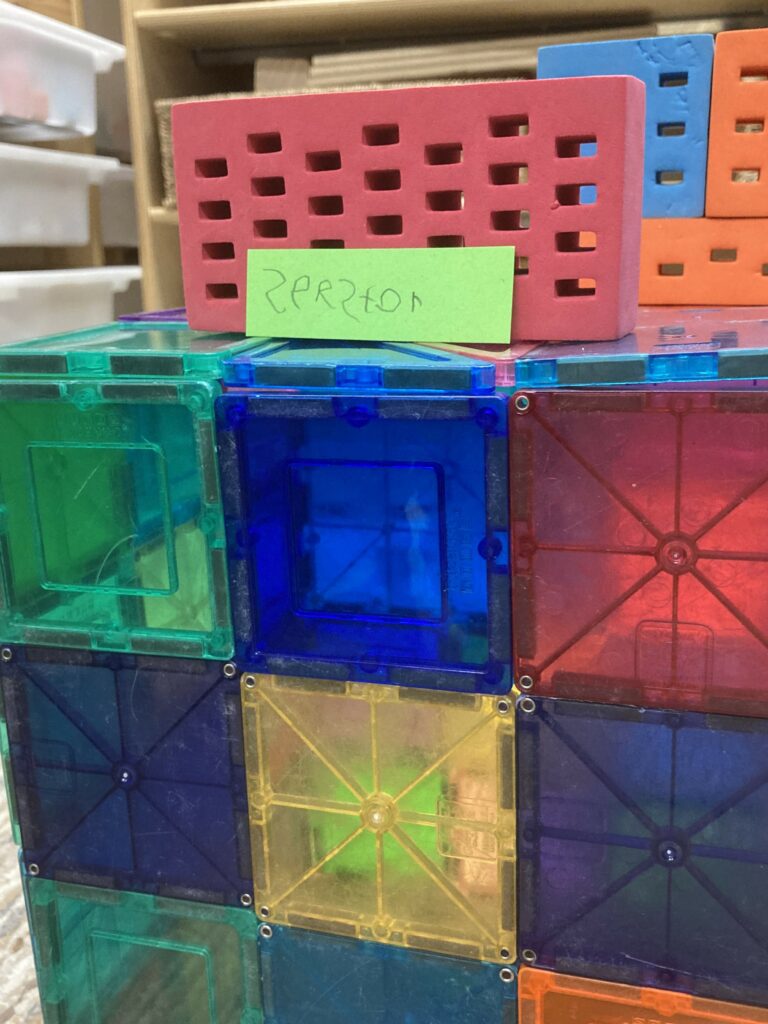
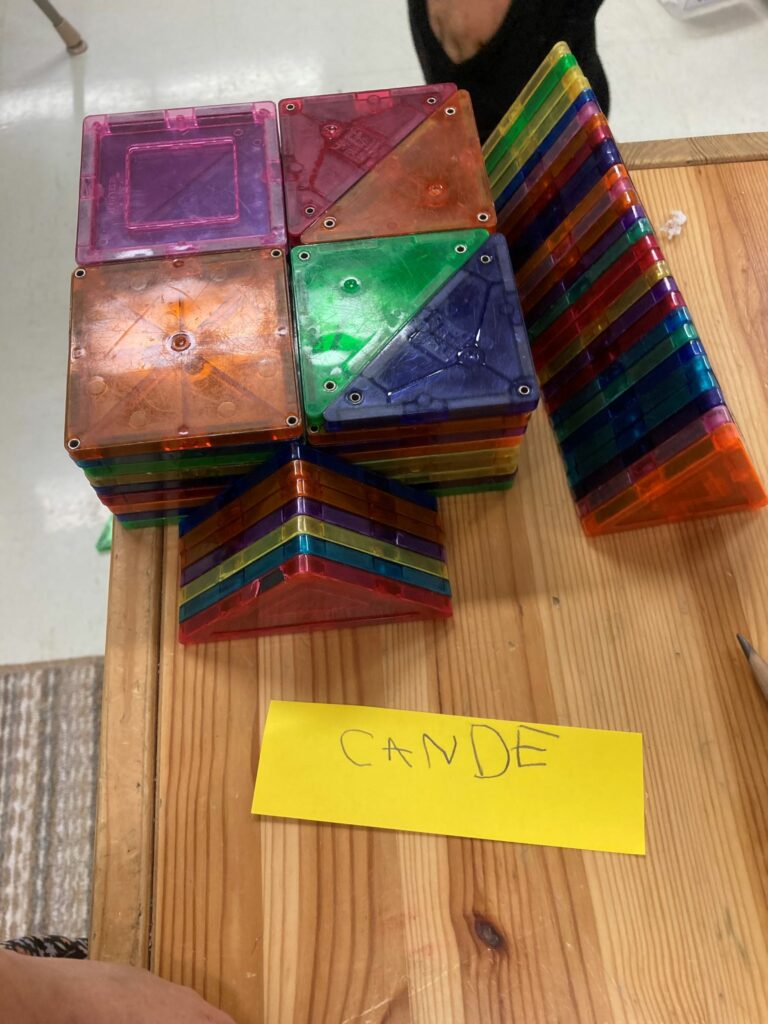
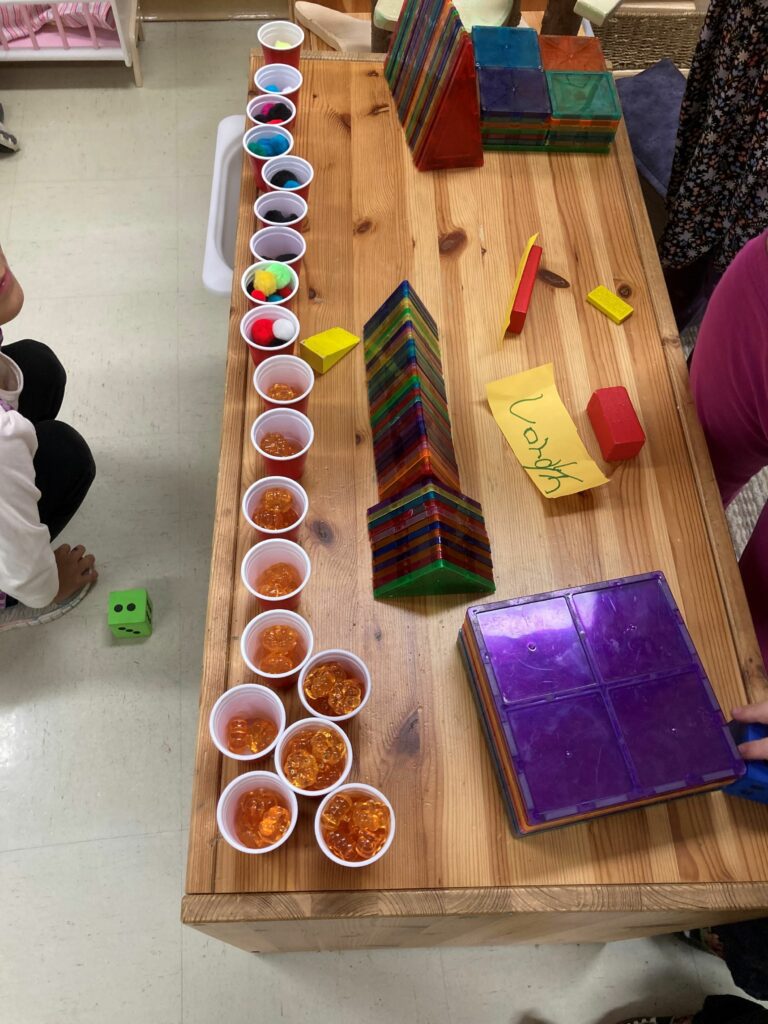
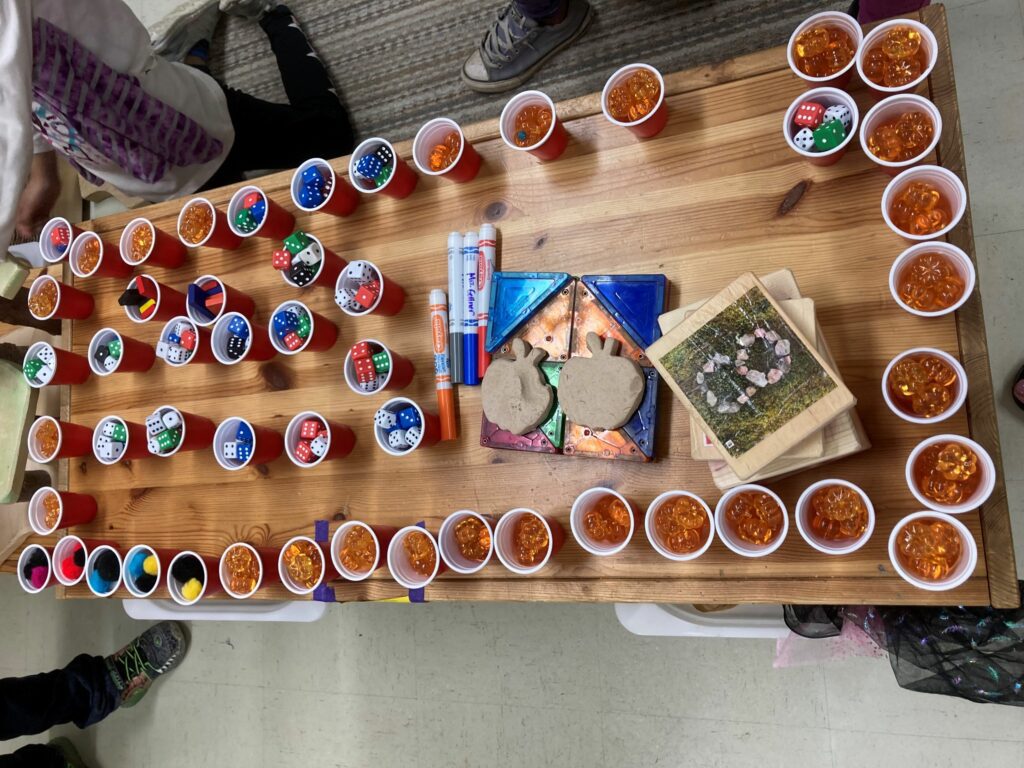
Authentic play opportunities, lead to authentic learning opportunities.
Happy Learning,
Lynda

